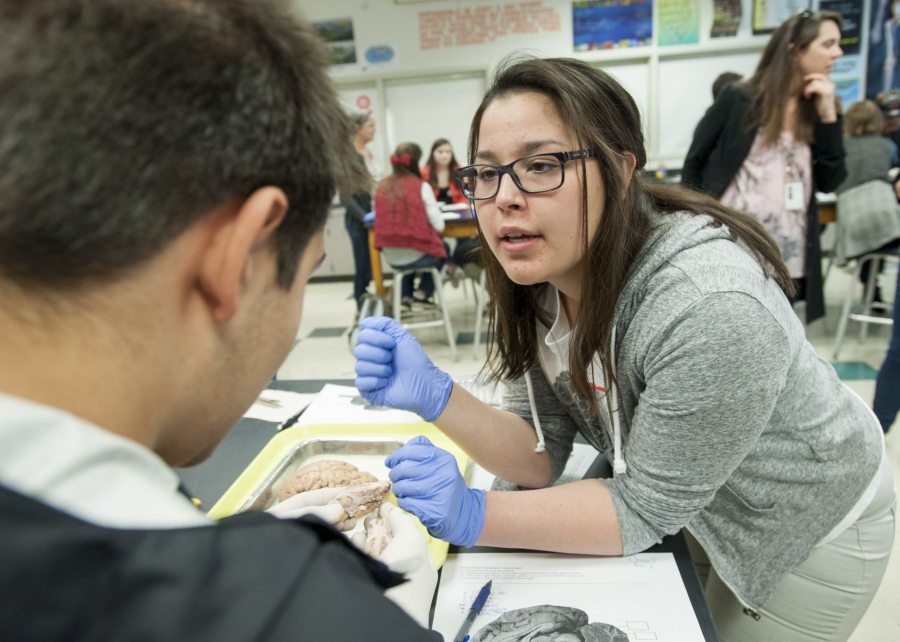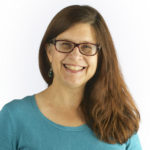A neuroscience outreach group that brings human brains and art into K-12 classrooms is taking its show to the nation’s capital later this month.
Neuroscientists, artists and students from Washington State University are part of a Neuroscience Outreach Group: Growing in Networks team that will lead several discussions about brains, brain research and brain-themed artwork April 25 to 30 at several Washington, D.C., venues — including the White House, Senate and House of Representatives.
“We take brains and art into classrooms and see people’s eyes light up. We’d be happy to bring brains to Congress,” said Bill Griesar, a Washington State University Vancouver neuroscientist, Portland State University instructor and NW NOGGIN co-founder.
In all, 28 people, including faculty and students from WSU Vancouver, Oregon Health & Science University and Portland State University will participate in the brain-related presentations and discussions.
At the House of Representatives, the group will give a “Brains + Art” briefing to the Neuroscience caucus and the Science, Technology, Engineering, Art and Mathematics — or STEAM — caucus.
“That arts-integrated approach will be a part of all of these meetings,” Griesar explained.
In a presentation to the Health, Education, Labor and Pensions committee in the U.S. Senate, NW NOGGIN members will talk about their success in developing K-12 students’ enthusiasm about brain science. The group also will explain how their community outreach events in pubs, theaters and other venues helps adults not only become enthusiastic about brain science, but also to see the value in federal funding of brain research.
At the White House, some members of the group will present at the Office of Science and Technology Policy.
“We’ll get an opportunity to talk about the need for federal dollars to fund neuroscience,” Griesar said. “We’ll also talk about how our students have been involved in these arts-integrated outreach activities. They are very interested in learning how these arts-integrated research programs work.”
When the NW NOGGIN group visits two low-income elementary schools in Washington, D.C., students will have the opportunity to observe human brains close up. After learning about how the brain’s neurons work, students will build their own replica neurons from pipe cleaners. Then they will examine brain-inspired artwork and will make Petri dish art prints.
Later in the week, the students’ artwork will be displayed at the Phillips Collection, a museum of modern art for a special NW NOGGIN presentation called “Brains, Beauty and Brews Neuroscience Night.” The event will highlight the brain science underlying human perception of landscapes. Two weeks before the event, Neuroscience Night at the Phillips was already sold out.
Neuroscience Night will include the exhibit “Seeing Nature: Landscape Masterworks” from the Paul G. Allen Family Collection. It features 39 masterpieces spanning five centuries and explores the evolution of European and American landscape art.
Neuroscience Night asks the question: How does your brain react when you look at artwork? In a “brain makerspace,” participants can hold and examine human brains, try brain challenges in conjunction with the art exhibit and create a neural-network art piece.
“We’ll be talking about the neurophysiology of visual perception: How you see with your brain. What parts of the brain are involved in perceiving colors and depth and contrast and spatial relations. Your emotional response to the work. The memories it calls up,” Griesar said.
The “brews” part of the event will include Northwest beer and wine provided by Burnt Bridge Cellars in Vancouver and beer by Fort George Brewery in Astoria, Ore.
“Since we’re going to be highlighting Northwest neuroscience and art, we thought we’d also approach Northwest beer and winemakers,” Griesar said.
The human brains for all events will be provided by the American Brain Coalition, a nonprofit organization comprised of leading professional neurological, psychological and psychiatric associations and patient groups. They will bring several human brains with various characteristics, including a brain with Alzheimer’s.
The WSU Vancouver contingent will include Griesar; Jeff Leake, artist, instructor and neuroscience outreach coordinator; Barbara A. Sorg, Integrative Physiology and Neuroscience; Christine Portfors, Biological Sciences; Chancellor Mel Netzhammer; eight undergraduate students, three graduate students, one post doctoral student and one recent graduate.
The three universities provided money for the trip.
“The grad students are getting terrific opportunities to explain their work to the general public. To make some pretty extraordinary work more accessible. To let people know what they’re doing,” Griesar said.
So far through its outreach efforts, NW NOGGIN has reached about 9,000 K-12 students and about 1,000 community members. But with the exposure to lawmakers and other influential leaders in Washington, D.C., that number of brain enthusiasts will continue to grow.
“The brain is amazing. It grabs people’s attention,” Griesar said. “You want to know how your brain works. You want a user’s manual.”
Susan Parrish: 360-735-4515; twitter.com/col_schools; susan.parrish@columbian.com; www.facebook.com/schoolsclarkcounty




